Wood has many strengths, but also weaknesses such as low resistance to fire, moisture, insects, fungi and mold. When we use it to make furniture and other objects, it is protected at the factory with different materials, and if it happens to be damaged by water, mold or insects, even if the damage is total, the consequences are not dramatic. But what happens when it is used to build wooden houses, when planks, beams and posts are building materials on which the whole house and even the lives of those inside it depend for their resistance to fire, water and insects? In that case special treatments are needed to increase its resistance.
Do we apply treatments only if we want to or are there regulations and obligations?
Before analyzing the treatments that are applied to wood used in construction, let's first see if there are any regulations and what they are. I don't think anyone believes any more that you can build anything, that anyone who sets out to build a house can start tomorrow and use anything and everything to build it. Of course, there are regulations, which are known both to builders and to those who sell or produce building materials.
At European Community level there is the EN 1995, i.e. Eurocode 5: Design of timber structures, called E5 for short. It is a comprehensive and complex document, covering the properties of wood and wood-based materials used in construction, their durability, behavior in extreme situations, joints with metal and other such information.
In addition to this European standard, there are national standards and regulations, because each country has its own specificities. These too must be complied with, and if the EC requirements are milder, the national ones take precedence, as they take much better account of local hazards.
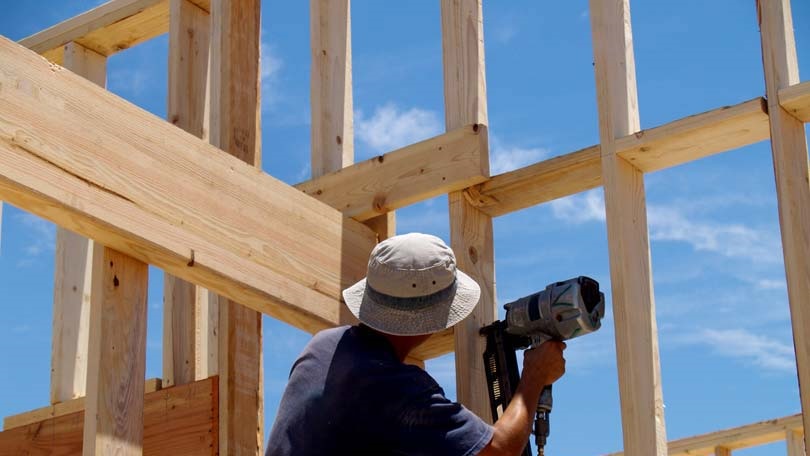
Moisture resistance regulations
In terms of moisture resistance, our wood is divided into 5 risk classes:
- Class 1 - wood that does not come into contact with the weather or environmental moisture
- Class 2 - wood that may occasionally come into contact with an environment that creates non-persistent dampness
- Class 3 - wood outdoors, subject to weathering and frequent wetting, but not in contact with the ground
- Class 4 - wood outdoors, in contact with soil or fresh water, permanently exposed to moisture
- Class 5 - wood permanently exposed to salt water
While the resistance of wood in the first risk classes can be resolved with simpler treatments that can be applied on site after installation, the last classes require wood with superior properties, impregnated in autoclaves.
Regulations on resistance to biodegradation
Resistance to fungi and molds is also regulated 4 degrees of biodegradation risk:
- Grade 1 - wood used indoors where moisture cannot cause xylophagous (wood-loving) fungi to grow and develop
- Grade 2 - wood used indoors in areas with minimal risk of xylophagous fungi (rafters, slats, interior walls)
- Grade 3 - wood used outdoors where there is a risk of xylophagous insects and humidity can reach 30% (exterior stairs, balconies, railings, exterior cladding)
- Grade 4 - wood permanently in contact with the ground or permanently exposed to the elements (posts, house sills, shingle)
I'll explain in a moment about the insect fungicides with which the wood is treated to withstand these degrees of risk.
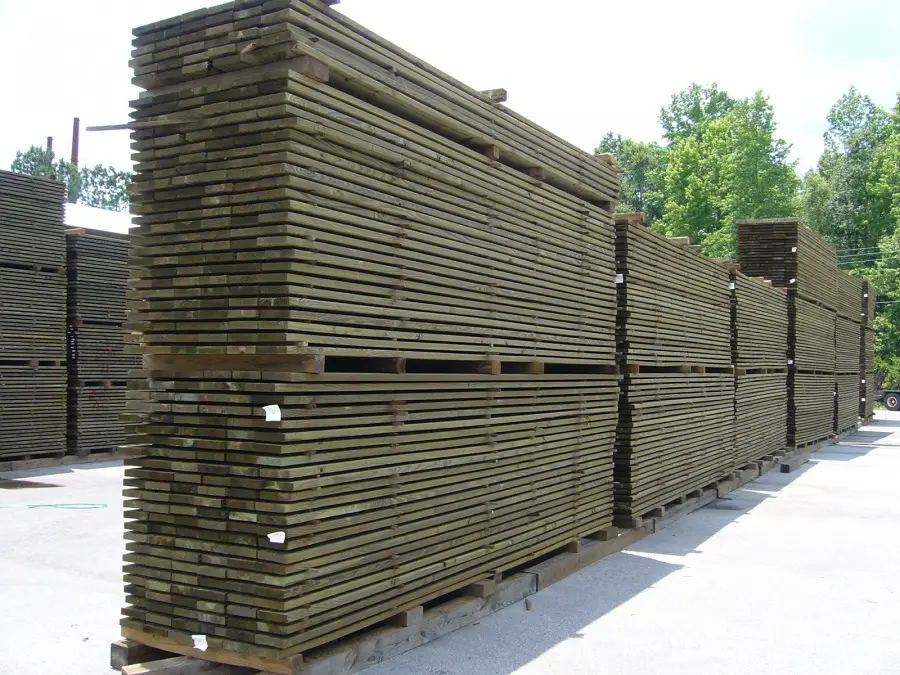
Fire resistance regulations
The regulations in this area are very complex and it would take a very long time to talk about each one. First of all, you should know that the fireproofing processes to which the wood is subjected do not make it immune to fire, but much more resistant. Basically, all these treatments should slow the spread of fire and make it easier to extinguish the charcoal.
It is good to know that a house made with modern building materials, such as glulam or CLT are highly fire-resistant and are used in countries such as Finland, England and the Netherlands in the construction of multi-storey buildings. As load-bearing structures they are even better than steel because the latter, unlike glulam beams, loses its load-bearing capacity at temperatures above 700ºC.
The regulations are, as I said, very many. Decision 2000/367/EC lays down material performance classes for fire protection performance. There are product standards requiring a certain level of fire resistance. There are also regulations that say that if products meet the requirements of the standards, they do not need further testing (EC Delegated Regulation No 1291/2014).
In our country the regulations on fire protection are: Law no. 307/2006, Law no. 212/1997, OG no. 114/2000. Non-compliance can lead to very serious consequences. There are also regulations on the use of fireproofing materials and testing of the fireproofed product:
- Technical Standard C58-96 - on fireproofing of combustible materials
- SR 652-98 - verification of flame retardancy
- SR 7248-99 - method for the determination of flame propagation on the surface of materials
- SR ISO 4828 parts 1-6 - general conditions for paints
- Standard for quality control and acceptance of construction and related installation works C56-85
All this may frighten you, but there are regulations that must be followed for everyone's safety and should not be ignored. Now let's see what protective treatments are applied to wood used in construction.
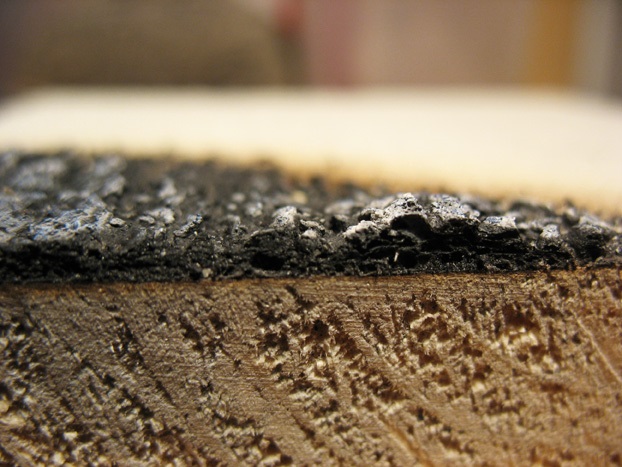
Fireproofing
This is the process of treating wood with fire retardants to increase its resistance to fire, stop the spread of fire and make the fire easier to extinguish. It should be noted that it is not a means of protection that stops the wood from burning at all.
The substances used are generally sodium, calcium or potassium silicates. The treatment can be done before the wood is used in construction or after the construction has been completed. Pre-treatment is done in special factories, by impregnation in autoclaves, under vacuum or pressure. In this case the substance penetrates much deeper into the wood and makes it stronger.
Impregnation by immersion can also be done before. This is more difficult, because it is necessary to make tubs in which the substance is placed and in which the wood is immersed. As the wood used in construction is large, this operation is not very easy. The wood remains in this solution for several hours, during which time it has to be turned to soak on all sides.
It is simpler to treat the wood after construction by brushing or spraying. However, this type of wood is less resistant and the treatment must be repeated after 3 years. If the wood is not visible, it does not need to be treated. You only need to make sure that the covering materials are fire-resistant or fireproof.
For fireproofing to be effective the wood must not have a moisture content greater than 15%. There are sources that say 18%, but The recommendation of 15% I found from companies that deal with fireproofing and are recognized by ISU. Fireproofing is not done if the ambient temperature is less than 10ºC and the humidity is higher than 70%.
Substances for fireproofing are diverse. There are impregnating solutions, primers, varnishes, paints. Flame retardant finishes should be applied in min 3 coats and the total amount of material remaining on the wood should be min 450 g/m². If this amount is applied in 1 or 2 coats there is a high risk that the film will crack and the protection will be compromised.
There are, as I said, also wood derivatives with very high fire resistance, such as lamellar beams (glulam) and CLT panels. In this case, the adhesive used to glue the layers of solid wood together plays a role in blocking the spread of fire. The fire acts on the outer layer and when it reaches the first layer of glue, it is extinguished and the structure remains intact.
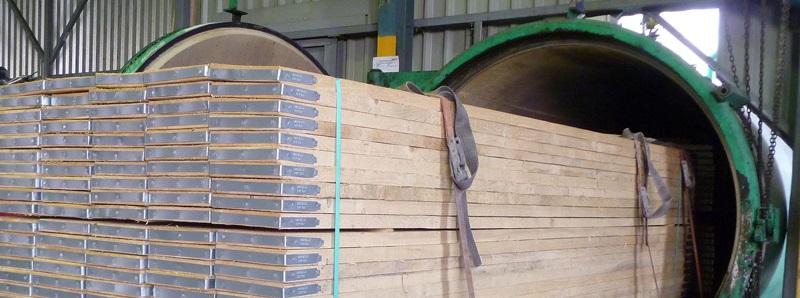
Moisture protection
We have written about moisture and water protection before. All the finishes used to cover wood primarily protect it from moisture. The natural state of wood is to absorb water because that was its way of feeding itself. The absorption of nutrient-laden water ensured its growth and development. The channels through which water enters the wood remain after the wood is cut. The exchange of moisture with the environment continues after the cut wood reaches equilibrium. Absorption is strongest at the ends of the grain, i.e. through the cuts perpendicular to the trunk axis. Therefore, if you want effective protection, those are the places where you must insist.
When we talk about wooden houses or wood as a building material then the main problem is rotting in contact with the ground or areas with permanent moisture. The area is much more affected compared to wood immersed in water because oxidation (oxygen in the air) and UV radiation in unprotected wood from the outside come into play at the contact area.
Resistance to decay is different depending on the species. In general, hardwoods are more resistant, but there are also some species of resinous wood that are very resistant and recommended for construction (larch, pine, molid). Very resistant is acacia wood, oak, frasin, nuc, tec.
Oil is a very good material for moisture protection. Unfortunately it is washed off in the weather and sometimes the finish has to be re-finished even after only a year. Moisture resistant varnishes and paints are often more effective and longer lasting, but they are not natural. Paints and varnishes are effective if the application technology and quantities recommended in the manufacturer's data sheet are followed.
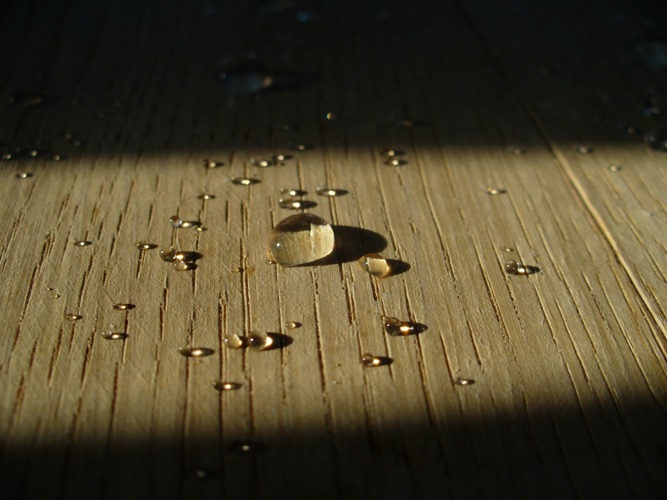
Treatment against insects, fungi and mold, i.e. wood anti-septization
Wood is a material loved by insects, fungi and molds, especially if its humidity exceeds 18-20%. They feed on the wood and over time they end up eating it. Especially if the wood is in less visible areas - attic, cellar, areas covered with parquet flooring or thermal or sound insulation. This can dramatically damage the structure.
Insects can even come from 'live' wood. They usually stay between the bark and the trunk, but can also penetrate the wood to lay their eggs. To avoid starting work with already infested wood, timber used in construction is treated beforehand by heating to 60ºC or steam treatment. At such temperatures the insects, their eggs and larvae die.
Insect fungicide treatments are also very varied. The wood can be impregnated in autoclaves, the substances can be sprayed or applied with a brush or trafalquet or injected. Another process to eliminate insects (koi) is gassing or fumigation. But it is a dangerous process that should be done by specialists. If you decide to apply such substances with a pump, you should be aware that you need a special mask and suit and that the substances are very aggressive.
The most commonly used substances for insectofungicide treatment are copper sulphate (brownstone) and sodium borate (borax). Both are familiar to you. The eggplant is used to make solutions with which to spray vines and fruit trees. In combination with lime milk it forms Bordeaux mixture, which is also used against pests of vines and fruit trees.
Borax is also used to make solutions to treat sprains. Despite appearing harmless, it is a very good insecticide and is also used by manufacturers of natural insulation (hemp, jute) against rodents.
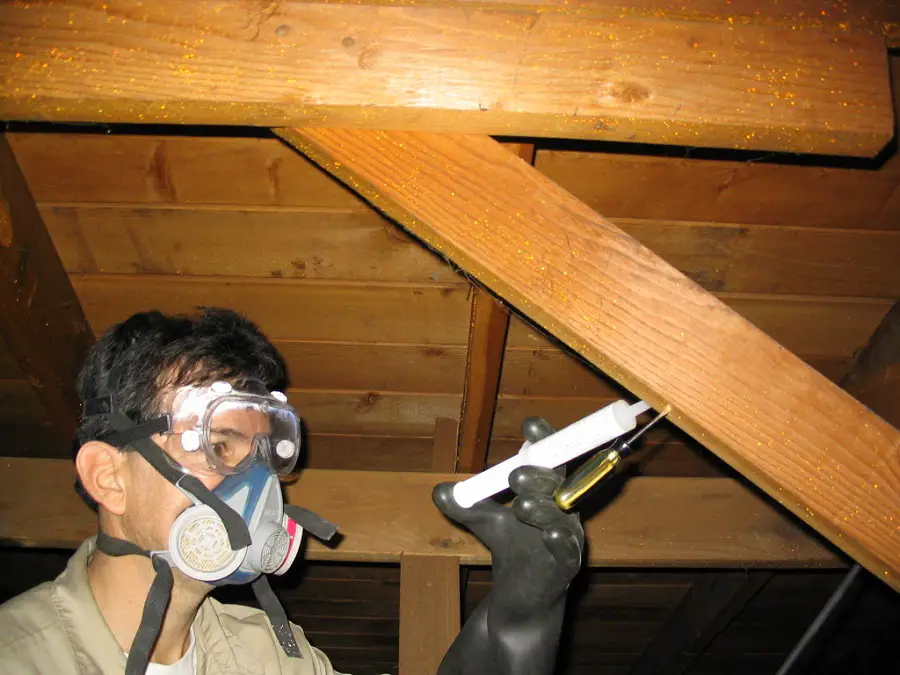
In conclusion
The wood used in construction must be treated for increased strength. Even a self-made house should use building materials that have been impregnated, heated or steamed so that insects and their larvae are removed and strength is greatly increased.
Don't try to save money by eliminating fire, damp or insect-resistant treatments altogether. The consequences can be truly significant. And never take the recommendations of the fire brigade or building-resistance officers too far. It is better to take extra measures than not enough. You know what they say - good security is better than bad.
Good luck!

























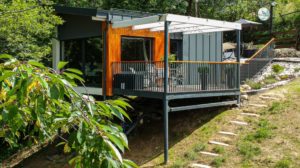


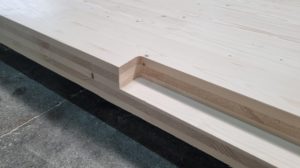
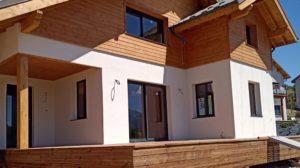

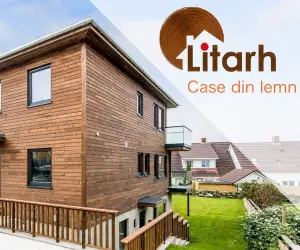
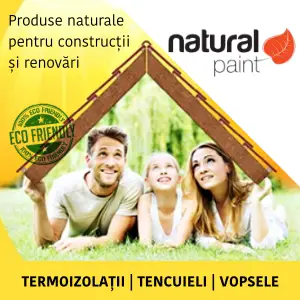
In general, the articles presented in the Wood Magazine make a good impression because wood is a little bit deciphered in the race with other innovative, intelligent materials, etc. It is important to say things by their name and to offer what is of interest. Above all, it matters a lot to have a wealth of knowledge and a continuous desire for knowledge in order to keep up with fashion, needs and the rules of the game. After you go through stage after stage, at the end you realize how little you know. This is what happened to me when I was put in the situation of having to make a synthesis paper with the role of a national technical regulation, now mandatory for representative categories of organizations, construction and the general public. The material is good, and that is why I consider it necessary to add to it the document I have elaborated for the protection of wood in constructions against biological aggressive agents, bad weather and fire. This document is addressed to specialists and interested individuals: Technical Regulation "Technical Specification for the Protection of Timber Construction Components against Aggressive Agents. Requirements, performance criteria and prevention and control measures - Indicative ST 049-2014", approved by Order of the Minister of Regional Development and Public Administration No. 713 of April 3, 2015, published in the Official Gazette of Romania , Part I, No. 318 bis/11.V.2015. Good luck Mihaela!
Thank you, Mariana!
Good evening!
My name is Constantin and I am going to build the floor of my house from 25/5cm wood cabinets.The wood is freshly cut.Please give me an advice with what solutions would be good to treat it:
1.borax
2.copper sulphate (vein stone)
3.I have read all your that it is good to give it to the heads with paraffin
Use them all?
I don't have the resources to buy dry wood.
Hello!
Borax and copper sulphate are solutions that protect wood against insect attack. They have nothing to do with drying wood. If the wood is very green, the risk is that it will decrease in volume and that it will crack or warp. Especially at high temperatures. What you need to do is to prevent the water from escaping quickly from the wood, because this causes tension and cracks. Because dry it will still dry out. For this you can apply paraffin on the ends (where the fibre ends are and more water comes out). It is good to apply linseed oil or a very thin layer of varnish all over the surface.
Below are 2 links where you can find more information.
All the best!
https://revistadinlemn.ro/2016/09/02/am-taiat-nucul-cum-il-usuc-sa-nu-crape/
https://revistadinlemn.ro/2018/06/13/stabilizarea-lemnului-verde-pentru-evitarea-craparii/
Good evening!
Thank you for your answer!
So how is better: to stabilize it first, i.e. to give it with linseed oil and then after the oil has been absorbed and dried, to treat it with borax solution?
A recipe for diluting borax and how to apply it can you give me?
Thank you!
Good morning!
First the borax solution and then the oil.
Use a 20-25% borax solution in water. Apply with a brush.
If the wood already has pests inside (decay) borax is not effective.
All the best!
Hello! What treatments to use to treat against cavities... I saw that the stone and borax... In what proportions are used? Which one is better? I have to treat the wood/structure of a wooden house.
Hello!
As far as I know, borax is the substance most used as a treatment against caries. But there are other options. You can find them in the links below.
All the best!
https://revistadinlemn.ro/2017/08/08/despre-cari-motivul-aparitiei-ciclul-de-viata-preventie-tratamente/
https://revistadinlemn.ro/2018/08/23/tratamente-naturale-impotriva-carilor/
Good evening, I would like to apply fireproofing solution to a 115meters attic, but I understand that I have to apply a brush, it was fireproofed in 2015, but now I have to submit the file to the fire department.If you can help me please contact me Thank you tel 0773343919 Mrs Enache Elena